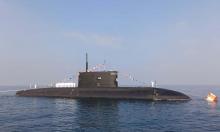US, Russia agree on plutonium disposal plan

An agreement on how to safely dispose of 34 metric tons of Russian weapons-grade plutonium was reached by the U.S. and Russian officials – in a major step toward a joint nuclear nonproliferation effort that at times has been close to falling apart.
The two countries, in a joint statement to be issued later Monday, outline a plan where Russia agrees to modify its fast-neutron reactors so that they can burn the plutonium, yet ensure that additional plutonium will not be produced.
In turn, the United States, which also will dispose of 34 tons of excess plutonium from its weapons program, will continue to help Russia pay for construction of a plant in Russia to turn the plutonium into a mixed oxide fuel for the reactors and in research of a more advanced reactor that could speed up the disposal process.
The two countries tentatively agreed to the plutonium disposal program seven years ago when it was hailed as a breakthrough in safeguarding some of Russia's nuclear material. But progress stalled because of a variety of disagreements, most recently over how Russia would destroy the plutonium.
Russia's ambivalence in turn caused Congress to balk at approving money for the U.S. portion of the plutonium disposal effort because of what lawmakers called the apparent inability to get Russia to agree on a disposal plan.
A joint statement being issued by Energy Secretary Samuel Bodman and Sergey Kiriyenko, director of Russia's Atomic Energy Agency, Rosatom, outlines a "mutual understanding" as to how Russia's plutonium would be disposed of and reiterates both countries' commitment to the program, officials said.
The statement was being released in both Moscow and Washington.
William Tobey, deputy administrator at DOE's National Nuclear Security Administration, said in an interview that the agreement should resolve some of the key concerns in Congress and keep the U.S. program on track.
"We nailed down some important details," said Tobey.
Among them, he said, was assurance from the Russians that the reactors used to dispose of the plutonium will be modified to burn more than they produce, that the plutonium they produce will not be weapons grade, and that the U.S. contribution will be capped at $400 million (EUR273 million).
While viewed as major nonproliferation effort, the plutonium disposition is expected to take several decades and cover only a fraction of the weapons-grade plutonium both countries possess. The United States is believed to have about 100 metric tons of weapons-grade plutonium and Russia about 140 metric tons.
Subscribe to Pravda.Ru Telegram channel, Facebook, RSS!





